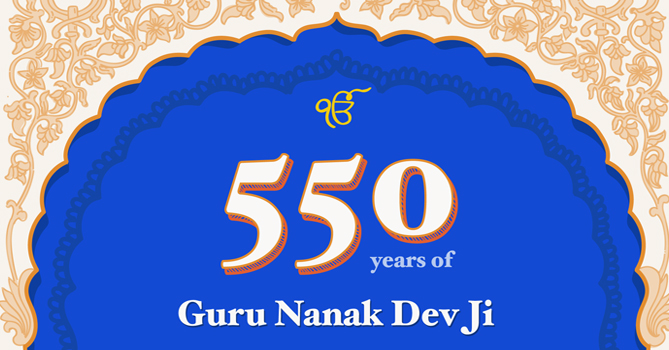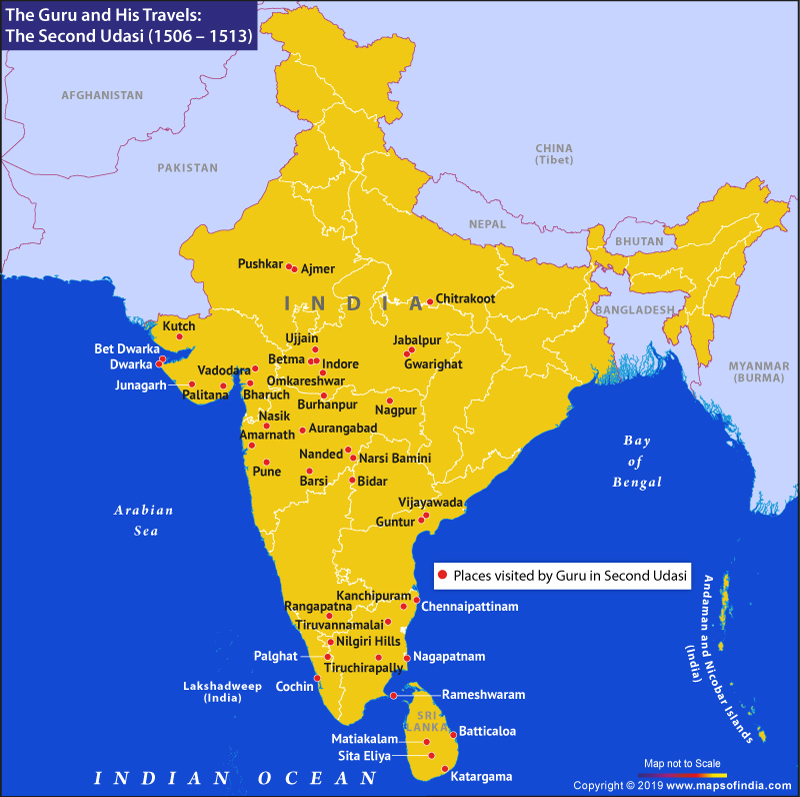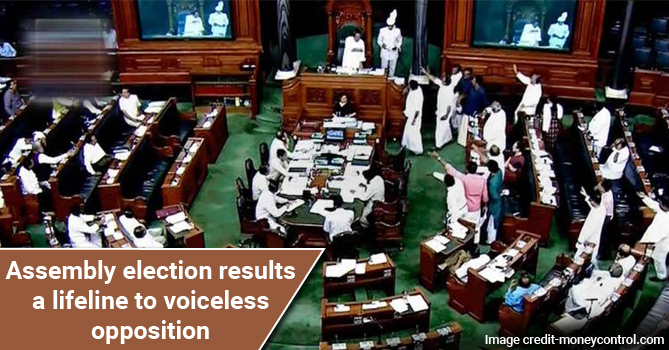

Guru Nanak Dev Ji (1469-1539) is the first of the 10 Gurus and Founder of the Sikh faith. He was born on Saturday 15 April 1469 in village Talwandi Rai Bhoe Ki, then part of the undivided Punjab region (present-day Pakistan).
At the age of 30, Guru Nanak left home to travel and spread his message of Ik Onkar or One God and took upon himself to enlighten people of the word of the real God. He traveled widely within India and to distant countries, covering a distance of 28,000 km spread over five journeys or Udasis.
Bhai Mardana, Guru Nanak’s Muslim childhood friend, accompanied Guru Nanak in all his journeys, playing the Rebab, a musical string instrument.
In all places and along the journey, Guru Nanak would enlighten people through his divine Shabads (Hymns) the existence of Ik Onkar or One God, and to give up existing superstitions and futile rituals in their pursuit for salvation.
Well-read in several religious scriptures, the Guru would engage in healthy debates with priests and religious scholars as he went along, winning them over with logic and rational reasoning.
In the First Udasi from 1500-1506, Guru Nanak visited Sultanpur, Bhatinda, Tulamba (present day Makhdumpur) in Multan district of Pakistan, Sialkot in Pakistan, Saidpur (present day Eminabad) in Pakistan, Pasrur in Pakistan, Delhi, Panipat (Haryana), Nanakmata – Nainital district (Uttarakhand), Tanda Vanjara – Rampur District (U.P), Benaras (U.P), Gaya (Bihar), Hajipur (Bihar), Kamrup (Assam), Asa Desh (Assam), Shillong (Meghalaya), Manipur, Sylhet (Bangladesh), Dhaka (Bangladesh), Calcutta (West Bengal), Cuttack (Odisha), and Puri (Odisha).
Guru Nanak began his Second Udasi (1506-1513) at the age of 37 years and traveled for seven years.
There is some debate among Sikh scholars whether Guru Nanak returned home after the First Udasi or whether he proceeded southwards after Puri in Odisha.
During the Second Udasi, Guru Nanak visited the following places:
- Andhra Pradesh: Guntur, Vijayawada
- Tamil Nadu: Chennaipattinam (Chennai), Nagapatnam, Kanchipuram, Rameshwaram, Tiruvannamalai, Tiruchirapally, Trivanmalay, Karnataka: Bidar, Palghat, Nilgiri Hills, Rangapatan
- Kerala: Cochin
- Madhya Pradesh: Burhanpur (Khandwa), Betma (Indore), Chitrakoot, Gwarighat, Indore, Jabalpur, Omkareshwar, Ujjain
- Gujarat: Bharuch, Bet Dwarka, Dwarka, Kutch, Palitana, Junagarh, Vadodra
- Maharashtra: Aurangabad, Amarnath, Barsi (Sholapur), Nanded, Nasik, Nagpur, Narsi Bamini, Pune,
- Rajasthan: Ajmer, Pushkar, Rikhanpur
- Sri Lanka: Batticaloa, Sita Eliya, Katargama, Matiakalam

The Second Udasi (1506-1513)
Khandwa: Guru Nanak and the Dakhni Oankar
Guru Nanak traveled to Nagpur and then moved to Khandwa in Madhya Pradesh. In Khandwa, he visited the famous Omkareshwar Temple in the Narmada Valley. It’s a beautiful location with the Vindhya Range of hills to the North and Satpura Range on the South.
The temple is one of the nine installed Lingas of Lord Shiva. Guru Nanak met the Chief Priest of Omkar Temple, and the holy discourse between the two is recorded as Ramkali Mahala 1 Dakhani Oankaru and is part of the Guru Nanak’s Bani in Sri Guru Granth Sahib.
The composition comprising 54 Pauri or stanzas, and one Rahaoo (Pause), is recorded in pages 929 to 938 of the Holy book.
Guru Nanak debates the Pandit explaining the Akal Purkh (One and Only God) exists as an Eternal Entity, and the word OMKAR represents the Eternal One.
However, since OM – represents the Trinity of Lords – Brahma, Vishnu, and Shiva, it cannot equate with Omkar since Omkar is Akal Purkh – the creator of Lord Brahma who is himself viewed as the creator in Hindu mythology.
Bidar: Guru Nanak and the Miracle of Jhira
On departing from Omkareshwar Temple, Guru Nanak and Bhai Mardana traveled to Nanded in Maharashtra. It is here the last of the 10 Sikh Gurus, Guru Gobind Singh, spent his last years, 200 years after Guru Nanak’s historic visit.
From Nanded, Guru Nanak reached Hyderabad before traveling to Golconda on the outskirts of Hyderabad. From here, Guru Nanak reached Bidar, the beautiful hill-top city in Karnataka.
The Janamsakhis record a fascinating story marking Guru Nanak’s visit to Bidar, where he would meet several Muslim Pirs, including Pir Jalaluddin and Yakoob Ali, and other scholars.
Weary from a long journey, Guru Nanak stayed on the outskirts of Bidar, where several Muslim Fakirs were living in makeshift shelters. Curious, they gathered to hear Guru Nanak sing his Shabads and were interested to know his ideas. Soon word spread of a mysterious saint who spoke words of wisdom.
At the time, Bidar was facing an acute water shortage. Wells dug yielded poor quality water, and people were miserable. As per Janamsakhis, Guru Nanak uttered Sat Kartar and, using his wooded sandal, removed some stones and rubble. Miraculously, a Jhira or spring opened up, and clean, freshwater began to gush out.
The Gurdwara Sri Nanak Jhira Sahib came up at the site to mark the Guru’s miraculous act. The crystal clear stream still flows. Sikh historians record this place as the second miracle after Gurudwara Punja Sahib in present-day Pakistan, and some even refer to it as the Second Punja Sahib.
Junagarh: Guru Nanak Helps out King Bharthri
King Bharthri of Junagarh in Gujarat gave up his royal life and was living in Takhtupura in Moga, Punjab. But he faced a dilemma. He had to return to Junagarh to marry a princess within a day, failing which she would die, and the King would have to return to Junagarh again to marry another princess, and this would keep repeating until he married.
King Bharthri turned to the Jogis to use their Riddhi Siddhi powers (occult powers) to help him get to Junagarh. When they refused, he turned to Guru Nanak.
Janamsakhi Bhai Bala records how Guru Nanak used his special powers to reach Junagarh along with King Bharthri in time for the wedding. Post-wedding, they headed back to Moga.
The Gurdwara in Takhtupura commemorates this incident.
Somanth: The Guru Debates Superstition and Rituals
Guru Nanak visited Somnath Temple in Gujarat, one of the holiest sites of Shiva worship. Arriving here, Guru Nanak watched people following the age-old tradition of Shiva-ling worship.
Guru Nanak questioned the rationale behind the rituals saying it did not serve devotion to Ik Onkar, the one and only God. He educated people on giving up superstitions and caste-based divisions. He spoke of all humans being equal before the only God.
Guru Nanak was able to convince many devotees who gave up the age-old traditions in favour of service to God through service to humanity. Many followed Guru Nanak’s teachings after that.
Dwarka: Guru Nanak speaks against Idol Worship
From Somnath, Guru Nanak traveled to Dwarka, the city where Lord Krishna spent his last years. People here had been worshipping Lord Krishna’s idol for centuries.
Guru Nanak debated with local priests, religious scholars, and other devotees, that Lord Krishna was Lord Vishnu’s human avatar, and therefore, not God. He spoke against idol worship and continued to spread the message of Ik Onkar, through Gurbani (Guru’s holy word; Gospel).
In the Guru’s words where all are equal before God,
Sab mein jot, jot hai soi,
It is the same Spirit that pervadeth all.
Tisde chanan, sab mein chanan hoi.
It is His light that illuminates every being.
Many became followers of Guru Nanak.
Sri Lanka: Guru Nanak wins over Raja Shiv Nabh
His journey to South India saw Guru Nanak visit several southern cities, including Chennai and Rameshwaram, in the southern tip of India. From Rameshwaram, Guru Nanak traveled by boat to reach Singhaldweep or Ceylon, Sri Lanka’s former names.
There are several accounts regarding the timing and actual events of Guru Nanak’s visit to Singhaldweep.
Guru Nanak met Raja Shiv Nabh, who had heard of Guru Nanak’s spiritual powers from Bhai Mansukh, a disciple of Guru Nanak and a trader by profession.
Though eager to meet the Guru, Raja Shiv Nabh was skeptical whether this person was indeed Guru Nanak. He sent a message to the Guru saying if the dry garden where he was staying turned green, the King would meet him. As per Jansakhi’s accounts, the garden turned green, and the King and Queen rushed to pay their respects.
Another account describes the Queen had given birth to a daughter and hid the truth from her husband. She went to beg Guru Nanak to turn the girl into a boy. Guru Nanak complied, and after that, both Raja Shiv Nabh and his wife became Guru Nanak’s disciples.
Guru Nanak is said to have written 40 stanzas called Pran Sangali for the Raja Shiv Nabh which he left behind with the Raja. Later, Guru Arjan Dev tried to retrieve this document but it could not be traced. It remains a reference in Sikh history.
Guru Nanak travelled to Batticaloa, Sita Eliya – the place where Ravana held Sita in captivity, Kataragama, and Matiakalam before beginning his return journey.




